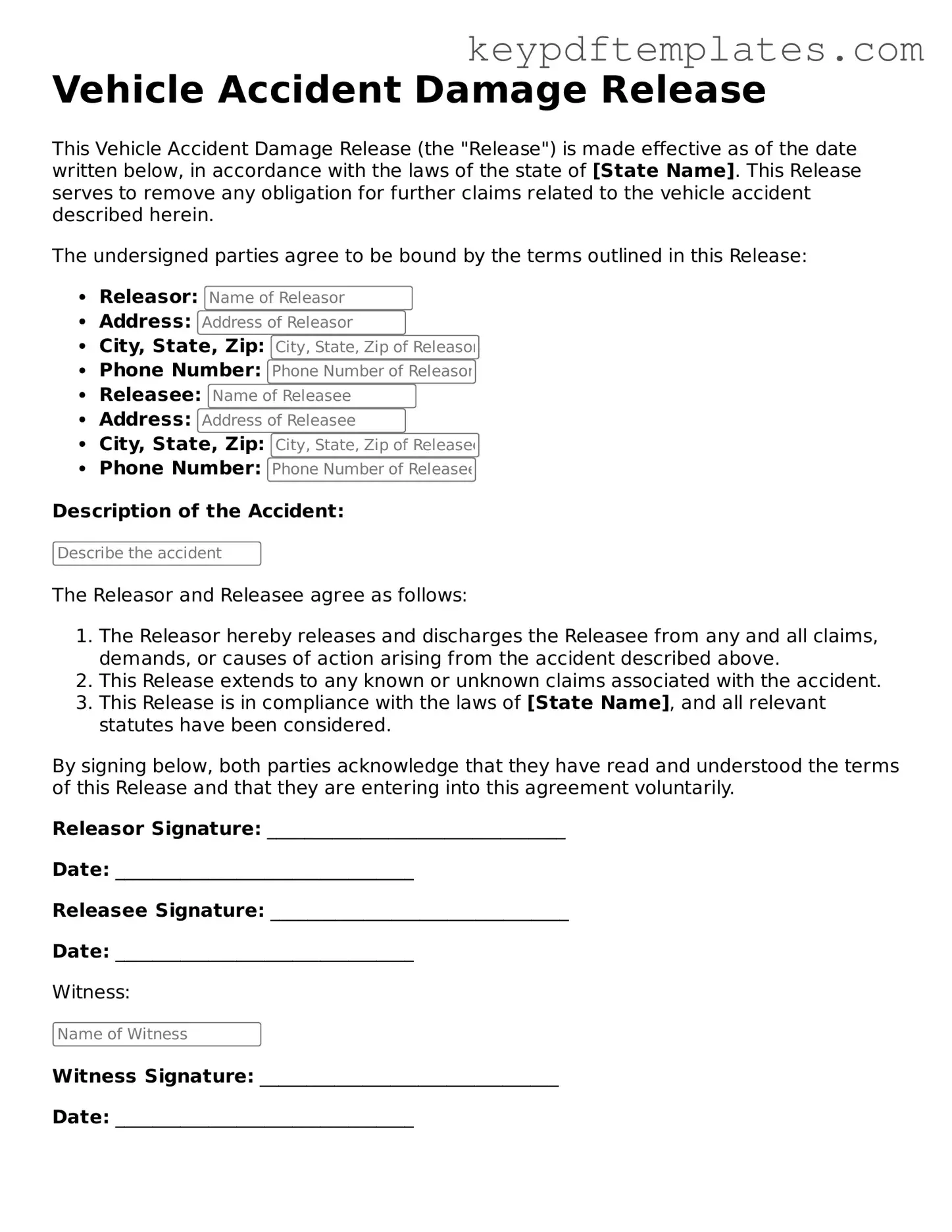Printable Vehicle Accident Damage Release Template
The Vehicle Accident Damage Release form is a legal document that allows individuals involved in a car accident to formally release one another from any further claims related to the incident. This form serves as a crucial step in the post-accident process, helping to clarify responsibilities and settle disputes amicably. Understanding its purpose and implications can significantly ease the stress that often accompanies vehicle accidents.
Modify Document Online
